Figure 1 New plans for old shipyard buildings.
As part of the “Container Ships”-project, funded by the Research Council of Norway (Researcher Project for Young Talents), in September 2022, Elisabeth Schober and her research collaborator Minji Song visited the city of Malmö in Sweden for a weekend-long fieldwork. The main purpose of the trip was to participate in the newly launched audio theatre tour titled Tears of Malmö, and to interview the scriptwriter Robin N. Spegel and the research associate Lisen Däldborg behind the creation of the play.
The point of departure for Tears of Malmö is the Kockums Crane which used to be a landmark in the city. This 138-metre high crane was owned by Kockums, a shipyard company formerly headquartered in Malmö. When it was installed in 1974, it was the largest crane in the world. Following the shipyard crisis of the 1970s and 80s in Sweden, the crane was last used in 1997, and eventually was sold to Hyundai Heavy Industries, a South Korean company. What is noteworthy is that the price of this crane was a mere 1 US dollar. It is a popular urban myth in South Korea today that the citizens of Malmö shed tears looking at the crane’s dismantlement and witnessing its departure to Ulsan in South Korea in the summer of 2002. The “Tears of Malmö” is not only the nickname of the Kockums Crane, but also a term frequently used in Korean journalism to signify crises and bankruptcy in the shipyard industry.
Created by the Malmö City Theatre, Tears of Malmö is a walking tour with a GPS-activated audio recording. Anyone can take part in the tour at one’s own convenience with the app “Drama Is Everywhere”, and by physically being at the site.
The main protagonist Lova is a millennial generation journalist who is given a task to write a piece about this crane. She connects with Kent, a former Kockums worker, and walks around the former Kockums site with him while trying to interview him.
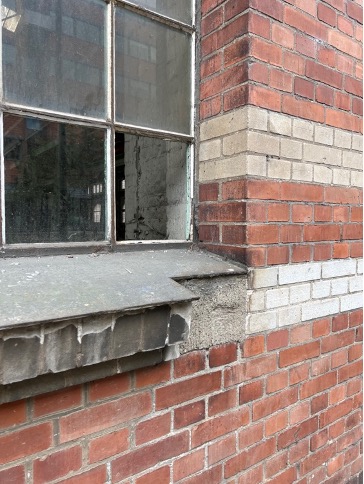
Figure 2 Windowsill for peeping into the buildling (Photo by Minji)
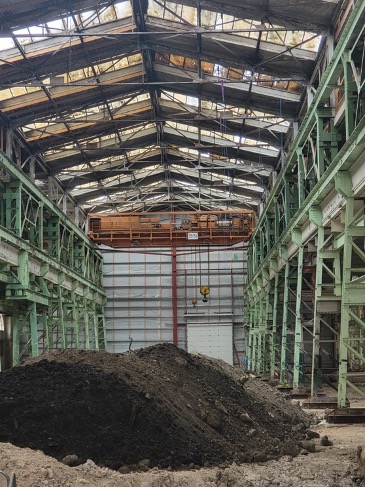
Figure 3 Scene through the window (Photo by Elisabeth)
As the audience, you are invited to follow the route where those two characters also walk along, and are continuously directed to sit, stand, or look at particular objects, buildings, or directions as the characters of the play also do. You will continuously listen in to their conversations, unbeknownst to them, although Lova occasionally slips out of the character and instructs the audiences where to go next. Thanks to the unusual and Covid-19-friendly format of the play, audiences can interact with the play with all their bodily senses at both old and new sites of the former shipyard. In-between the Malmö Universitet, newly furbished and modern residential buildings, and “industrial chic” cafes, audiences get to visit the nooks and crannies of now rusted down, abandoned, and nameless buildings and pits, which help us to walk throughthe transformation of the city.
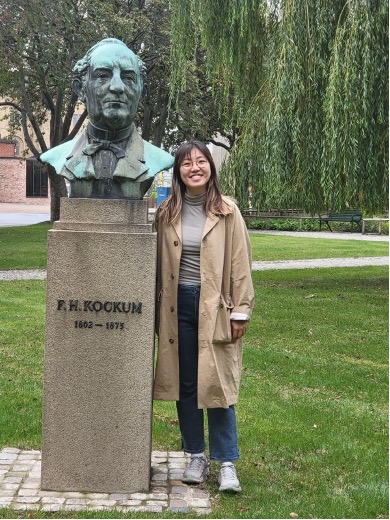
Figure 4 Minji with the F. H. Kockum sculpture
“It told me something about how the solidarity and the work between people (were), and how important the place was for them (…). I think I felt like they had been longing to meet again, somehow, but they were very excited to see each other.”
Lisen Däldborg, the researcher and journalist behind the theatre play, recalled the initial spark, which began with an unexpectedly overwhelming response on a Facebook group based in Malmö. As a preparation for the theatre play, she posted on social media with the hope to connect with people who worked at Kockums or knew anyone who worked there. Within a few hours, the comment section became an unofficial reunion among hundreds of people reconnecting with each other, sharing old photos, and asking each other how they had been.
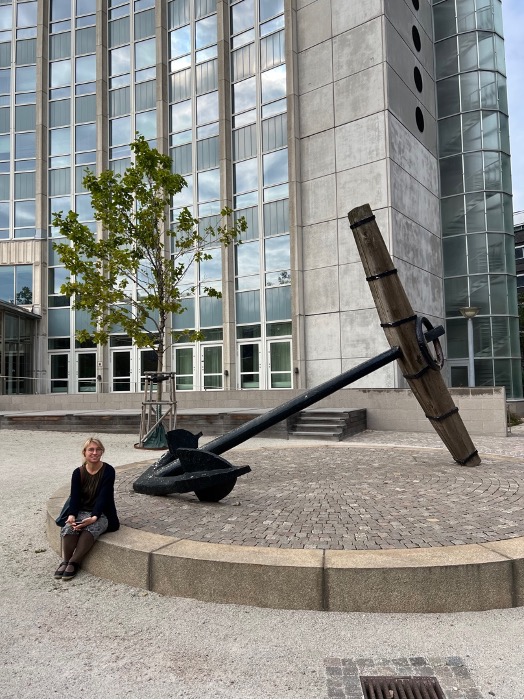
Figure 5 Elisabeth in front of the Gängtappen building, which used to be the headquarter of Kockums.
Elisabeth and Minji participated in the tour, explored the remnant of the Kockums site multiple times, and tried to locate where the crane used to stand. Due to the striking transformation of the waterfront into a commercial and residential area, we could only guess where the two legs of the giant machine may have stood. We also found that more abandoned shipyard buildings will be turned into luxurious condos and residential suites in the new future. Lisen notes that the change in the city’s slogan exemplifies the transformation: Malmö is now “a city of knowledge”, not a city of industry, as it used to be.
“It's also (about) remembering for me, I think, what the city looked like before. And also maybe about these people who worked so hard for so many years and built all of Sweden and the welfare that we have in Sweden today. (…) So it's just easy to forget, when everything is erased, like when the crane is gone, and everything is new.”
When asked whether it is true that people cried, Robin N. Spegel, the scriptwriter, pointed out that it takes a substantial amount of time to dismantle a crane. “I think they were, ‘oh, now they're taking one leg down', then it's like a month later [another leg goes]. I think maybe it was hard to gather at one specific moment [to cry]”.
When Minji told the tale of Tears of Malmö as represented in the South Korean news, Robin and Lisen both laughed and admitted that neither of them had believed that Koreans knew or cared much about it. “Tears of Malmö” is in fact a frequently recited phrase in the South Korean context, mostly brought up in a symbolic manner as a cautionary tale. Two former presidents of South Korea have mentioned Tears of Malmö in their speeches to express their concern over, and make promises to care for, cities like Ulsan that have a heavy dependency on the shipyard industry. It seems, however, that the story of Malmö has become more dramatic in South Korea as times went on; a version that Minji found in one Korean news outlet is that the people of Malmö not only cried, but that the scene of the departure was publicly broadcast with a funeral march music sounding in the background (Cho, Kim, & Moon, 2016[1]).
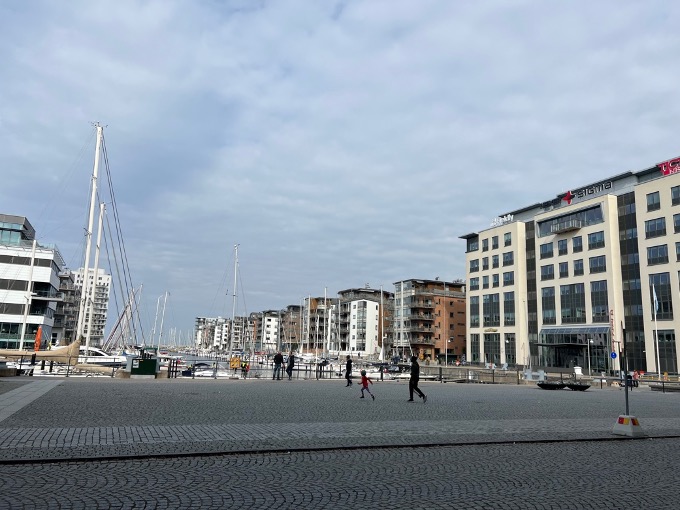
Figure 6 The Marina today (Photo by Minji)
Although it may be difficult to retroactively find out whether anyone actually cried, or who started telling this emotional tale, it is interesting that certain memories and views of the past and the workers’ lives are projected onto a huge inanimate object in such a romantic and nostalgic manner. Interestingly enough, unbeknownst to the Malmö theatre production team, there is also a theatre play in South Korea that was launched in 2019 with the same title, “Tears of Malmö (말뫼의 눈물)”. This play, too, depicts a shipyard-city, focusing on workers’ rights, labor activism, and the ambivalent feelings toward the crane amongst the locals. The next step for Elisabeth and Minji will be to delve into this South Korean theatre play, further exploring the affective dimensions around this unlikely connection between the two cities that have been joined by the journey of one giant crane.
[1] Cho, M. G., Kim, Y. K., & Moon, H. C. (2016, April 18). '말뫼의 눈물' 13년 후 한국의 눈물로 [‘Tears of Malmö’ is now Tears of Korea after 13 years]. The JoongAng. https://www.joongang.co.kr/article/19902207#home
